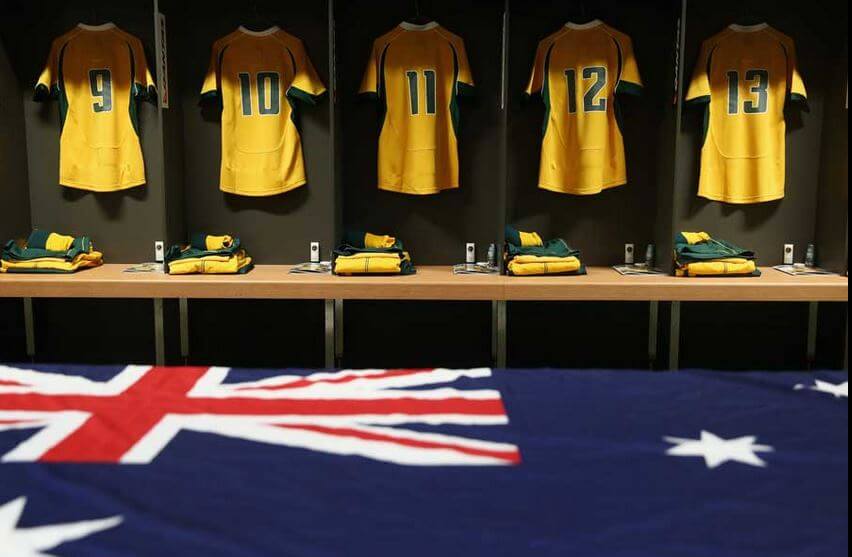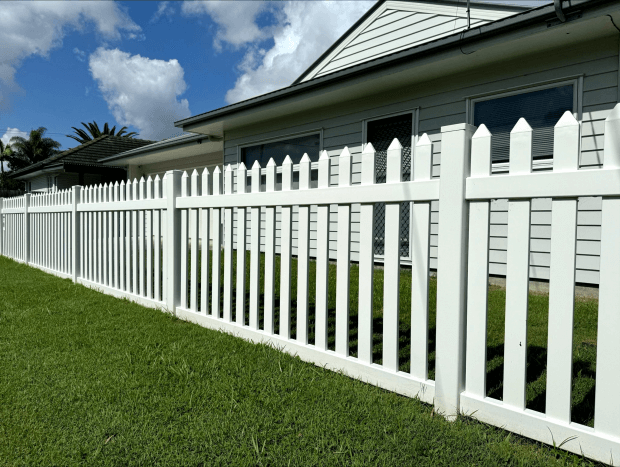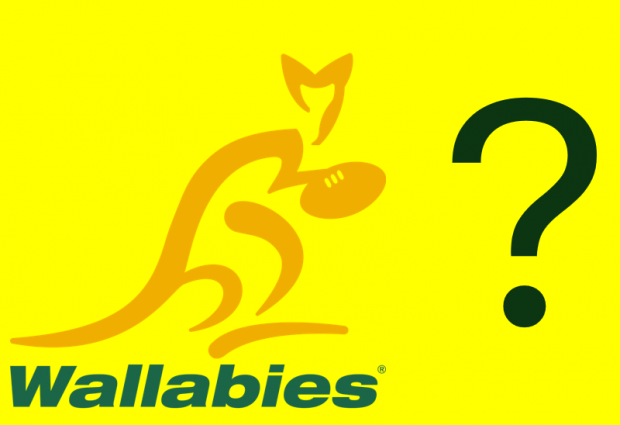Good morning G&GRs and welcome to Tuesday. It’s still early in the week, so there’s hope and optimism that it will be productive and exciting one, and unless you work weekends there’s only been one work day to tarnish the memories of what I hope was a good weekend.
Bris covered the results from the 6 Nations and the trial matches involving our Super Rugby teams, so I thought I’d put together an opinion piece (well all of my articles are) to pick up where Hoss, Nutta, and AllyOz were going on Friday: the issue of Former Wallaby Greats, as compared to former Wallaby players. The idea of this article isn’t to devalue the achievement of playing even a single test match for the Wallabies (which is something that I couldn’t even dream of doing) but rather to recognise those Wallabies who stood out as being something different and, to borrow from our resident philosopher Nutta, those who added their own stitch to the jersey.
Hoss opined on Friday that to be considered a Wallaby Great players would need to satisfy some of the following:
- Being part of a World Champion (ie. RWC) winning side.
- Being part of a side who enjoyed sustained Bledisloe Cup success. Hell, any Bledisloe Cup series success.
- Being part of a team who had a series win against the Lions.
- Being a player who’s consistently high deeds and contribution to the jersey leaves the jersey enriched by their time in it.

Which if we consider the performance of the Wallabies since 2001 (when we beat the Lions), and 2003 (when we came over so close to winning back to back World Cups), then it’d be a very short list indeed.
That got me thinking about the Wallabies who were at the end of our golden era, or who have followed it, and who might deserve to be included with the great players of the former era, not because of the success of the Wallabies, but because as individuals, they made the team better over a period of time.
What does that mean?
I started by thinking about the Wallabies since 2000, which is a lot of players, and I quickly realised that even researching that long list was too much work, so, I took a shortcut, and looked at the squads who attended the World Cups from 2003 to 2023, then I looked for those players that stood out because they featured at multiple World Cups, or because they had stuck in my mind as meeting Nutta’s criteria of adding to the jersey. I started to highlight those players who met those criteria and by doing that I developed a longish list.
What was interesting, and maybe not surprising, was that working from 2003 to 2023, the number of players that I was highlighting reduced, with only one or possibly 2 of the 2023 squad making the list at this stage. For me it is because relative to the teams they compete with, the Wallabies over this time declined, our ranking dropped, we lost every major trophy we held, racked up our first loss to Italy, and seemingly forgot how to win against higher ranked teams. The other factor in all of this, is how many of these players would get picked for New Zealand, South Africa, England or France, and put in that perspective, it continues to shorten the list.
This is the list that I produced. It isn’t by any means complete, and again, I’m trying to celebrate the performance of the best Wallabies of the last 22 years, not insult the many other players who have done something amazing by representing their country. Some of these will be contentious, and that’s ok, I’m looking forward to hearing what you all think.
- George Smith – in my view the most complete Australian rugby player of the professional era, would have played for any other team and excelled in a world 15 squad.
- David Pocock – another automatic selection on this list for mine, maybe not the all around game that Smith displayed, but would also have played for any international team.
- George Gregan – along with Larkham, was part of the 1999 World Cup winning squad, and helped beat the Lions in 2001. Knew how to win and take the team with him. If you haven’t watched it recently, then have a look below
- Stephen Larkham – World Cup winner, Lion tamer, Super Rugby champion, and all of this while being targeted with late shots by opposition forwards. That drop goal in the 99 world cup is a highlight of course, but his ability to ghost through the opposition defensive line was unmatched.
- Stephen Moore – played in three World Cups, captained the Wallabies, and played 129 tests at hooker. He led the Wallabies to the 2015 world cup final and overall added to the Wallabies jersey.
- Nathan Sharpe – played in three World Cups, was consistently excellent in his time in gold, and along with George Smith, Chris Latham, George Gregan, Stephen Larkham, Stirling Mortlock, Joe Roff and Matt Burke on this list, got to hold and drink from the Bledisloe Cup.
- Dan Vickerman – also played in three World Cups, added power, technical prowess, and brutality to the Wallabies pack.
- Stirling Mortlock – played in two World Cups, including 2007 as captain, and his intercept try against the All Blacks in the 2003 WC semi-final was brilliant. Amazing ability to go through the defensive line and hit hard in defence.
- Joe Roff – another of the Brumbies stalwarts from the golden era, deceptive pace, and the ability to beat his opponent with ease. Was brought into the Wallabies team for the second and third tests against the Lions in 2003, and made a huge impact, with an intercept try in the second test.
- Chris Latham – Latho had to bide his time behind Matt Burke and Joe Roff, and had to go from being mercurial to reliable to be a regular Wallaby. A booming left boot, loved the torpedo, deceptive pace, good defence, and an ability to sniff out tries.
- Matt Burke – World Cup winner in 1999, and Lion tamer in 2001, scoring the final try in the second test match. He played in the 2003 World Cup but, like Latham, was overlooked for the final in favour of the league converts, Rogers, Sailor and Tuqiri. Genuine pace and good goalkicking.
- Sekope Kepu – the big man played in three World Cups and after playing 110 test matches he led Moana Pacifica in their debut season. A true competitor.
- James Slipper – Jimmy Slips has played in four World Cups and racked up an amazing 143 test appearances playing both sides of the scrum. Seems genuinely humble, super competitive, and it looks like he makes the team better by being there.
- Rocky Elsom – played in two World Cups, captained the Wallabies and, according to Brian O’Driscoll, was the most talented player that BOD had played with.
- Will Genia – Genia was the first choice halfback in the 2011, 2015, and 2019 World Cups. Like Wallaby halfbacks before him, could do it all, run, pass, kick and, most importantly, pick the right one at the right time. Deceptively fast and a good defender.
- Scott Fardy – an excellent technician, and fierce competitor. Played 39 tests for the Wallabies, should’ve played more but seemed to fall out of favour with the coach and selectors so signed with Leinster for the 2017/18 season. Interestingly, played junior representative baseball in the same team as Rocky Elsom.
- Allan Alaalatoa – 7As has been a rock for the Brumbies for 131 appearances, and for the Wallabies. Played in all 13 tests for the Wallabies in 2024, after recovering from a ruptured Achilles in 2023 which forced him out of the World Cup. Is massively respected by team mates and commentators alike.

Some contentious others I’m on the fence about.
- Michael Hooper – amazing durability, and for five years was the first player picked. Played 125 test matches and became the fastest Wallaby to reach 100 test appearances as well as leading his country 69 times He won the John Eales Medal four times and was consistently the best performing Wallaby when he played in gold. Unfortunately, he also led the team through its greatest period of decline from 2017 to 2023 before being left out of the 2023 World Cup squad by Eddie Jones. Hooper cops a lot of criticism at times for his record as captain, however you could never fault his fitness, his preparation and his durability. Hooper is a very talented footballer, maybe not in the mould of previous 7s that played for Australia, but very, very good around the field.
While some folks wouldn’t have picked him for as long as the coaches did, he was through that time one of the Wallabies best. I’m not sure what that says about the standards in our Super Rugby teams and the Wallabies, but in a time where not many Wallabies would have made a world 15, Hooper was one of our best players. - Quade Cooper – I’m a Queenslander, so I loved the way that Quade played for the Reds and the Wallabies. Unfortunately, I don’t think we ever got to see the best, most settled version of Cooper on the international stage due to injuries in the 2011 World Cup, and successive years. He had a very public falling out with Robbie Deans and couldn’t find his way into Cheika’s good graces. Made a surprising comeback under Rennie during Covid; however, a torn Achilles and then non-selection by Jones ended his international career.
- Matt Giteau – undeniably talented, and played in the 2003, 2007 and 2015 World Cups. Made 103 test appearances for Australia, some of them after the eligibility laws were changed to allow him to play in 2015. He played a lot of rugby overseas and was playing for San Diego in 2024 at the age of 42.
Generation next: Future Wallaby Greats.

While there aren’t many recent players on the list above I think that there are green shoots in the Wallabies squad and emerging players in Super Rugby. If I revisit this article in six months time we may well be celebrating a Lions series victory to Australia and ushering in a new generation of Wallabies greats. If that’s the case, we may will be singing the praises of players like Rob Valetini and Fraser McReight. Who else do you think will make the list?
As always, thanks for taking some time to read this. Have a great Tuesday, and I look forward to the discussion in the comments section.
Cheers, RAWF.

